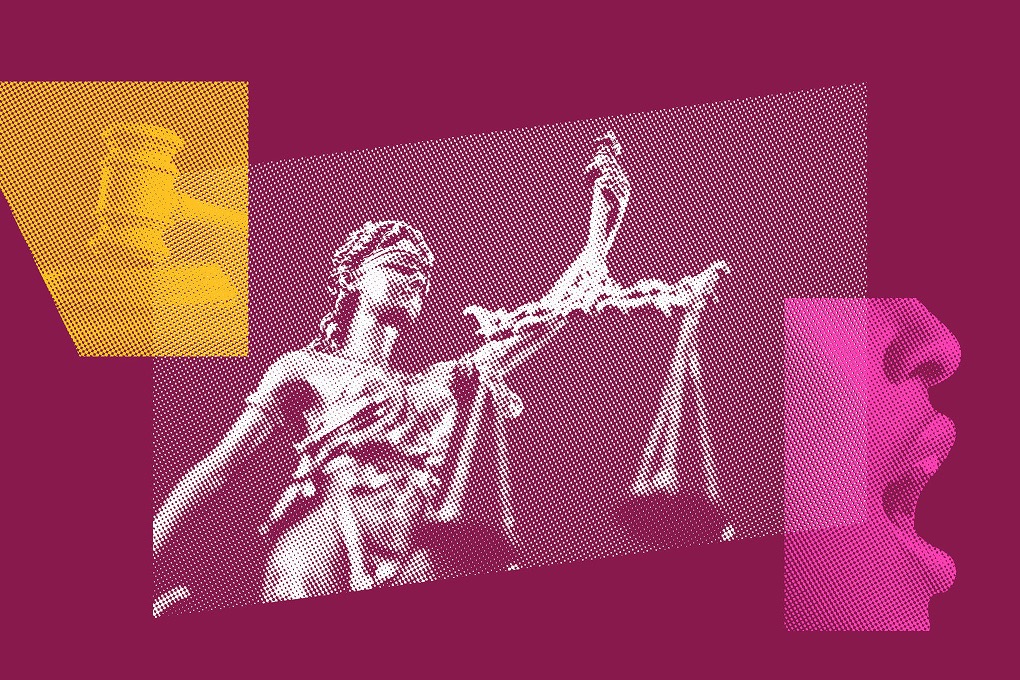Statement by Audrey Eisen
<!-- -->
I never thought that so-called "partial-birth abortion" would ever have anything to do with me. Why would it? I'm 34 years old and I desperately want children. My husband and I have been together for eight years, married for four, and trying to have a baby for two. Abortion was not something I thought much about.
But earlier this year, all that changed.
In November of 2002, after fighting infertility and experiencing the sadness of a miscarriage in July, we were thrilled to find ourselves pregnant again. While still apprehensive, we consciously decided to be excited - another loss would hurt just the same, regardless of whether or not we had allowed ourselves to be happy.
In the first few months, my endocrinologist performed regular ultrasounds to ensure that the embryo was developing normally. It was such a treat to be able to see our child growing. I kept the pictures and my thoughts in a pregnancy journal.
When it became evident that we were going to make it through the first trimester, my endocrinologist referred me to an obstetrician (OB). At my first appointment, the nurse put a fetal heart monitor on my belly and, much to our amazement, from a seemingly great distance, we heard the characteristic "whoosh" of our child's heartbeat. We were on top of the world thinking that, for sure, this one was going to make it.
At 13 weeks', however, all this changed abruptly when, during a routine ultrasound exam, my OB discovered our child had polydactyly (more than the normal number of digits). While at first we thought it was just the hands, we later learned that the feet were affected as well. At the time, my husband and I thought it was no big deal-we had both known people with an extra finger, and we were prepared to help our child live with the condition. However, we soon found out that that an extra toe or finger were the least of our concerns: polydactyly is associated with over 100 syndromes, most commonly Trisomy 13.
Trisomy 13 is characterized by multiple abnormalities, many of which are not compatible with life beyond a couple of months. Most fetuses with Trisomy 13 die in utero; of those who make it to birth, almost half do not survive past the first month; roughly three-quarters die within 6 months. Long-term survival is one year. Unfortunately, neither life nor death come easily for these children - theirs is a painful existence marked by periods of breathing cessation and seizures. Because my OB was unable to get a good image of the brain during the 13th week ultrasound, we returned at 15 weeks'.
The first thing my OB examined during this visit was the fetal brain. He didn't say a word. I could tell he was holding something back and asked that he tell me what he saw. He said, "It is not normal." The rest of the scan was a blur as tears ran down my cheeks and those of my mother and husband, who had accompanied me to the doctor's office that day. Following the scan, the doctor left us alone to compose ourselves. I cried with my whole body, from the depths of my soul.
Shortly thereafter, I had other tests. These confirmed that our baby had Trisomy 13.
At this point we discussed our options with a genetic counselor. My husband and I both felt strongly that we did not want our child to suffer; we decided to terminate the pregnancy as soon as possible. I had an abortion on the first day of my 16th week of pregnancy.
Soon after I had the procedure, I began to see news stories about a new federal "partial birth abortion" ban. Like many Americans, following the press on this issue over the past several years, I had thought, "My God, this must be something horrible." But as I mourned the loss of my much-desired pregnancy, I came to realize that if such legislation passed, the right to safe second-trimester abortions like the one I had might not remain available to those women who come after me. While proponents of this ban claim that it is aimed at one procedure performed late in pregnancy, the reality is that it would prohibit the safest and most common procedures used in the second trimester, well before fetal viability. Without access to this care, I don't know how women will endure if after routine prenatal testing they discover, as we did, that their fetuses suffer from grave conditions incompatible with life; I don't know how I would have endured.
Two weeks following my abortion, we received a letter from the genetic counselor. Our child had numerous abnormalities: the brain, heart, and other internal organs were not developing properly. Our child was also a girl and we miss her very much. In our case, abortion was the only humane choice. This choice must be preserved for the sake of all women and their families. The American public needs to understand the consequences of this ban and that the human face of so-called "partial-birth abortion," my face, could be their own.
